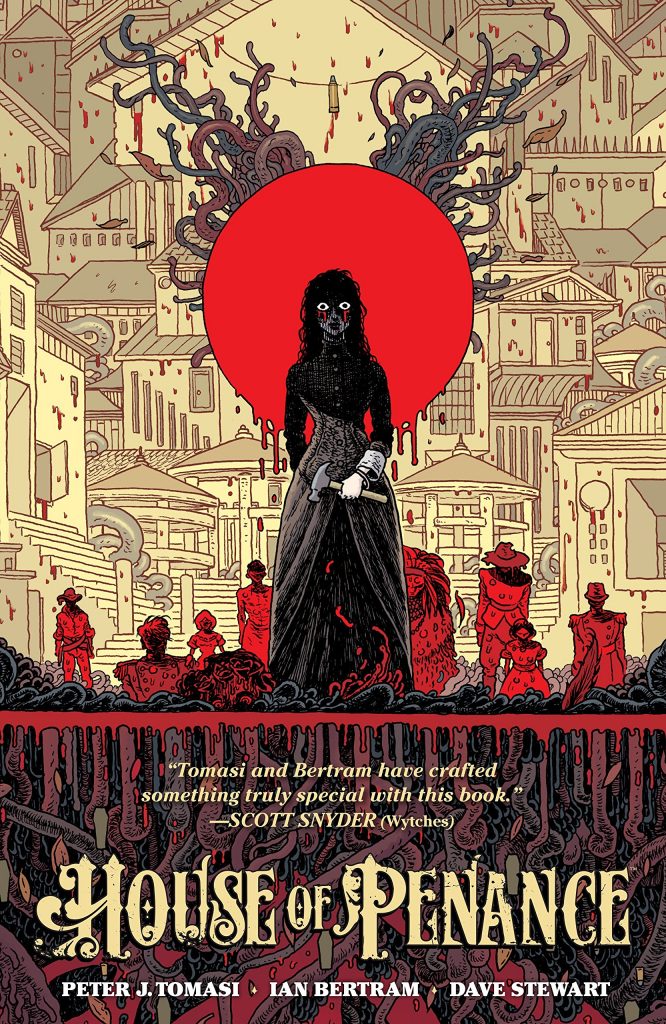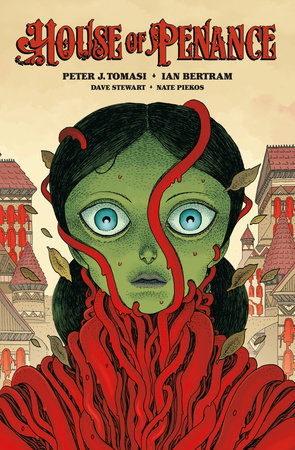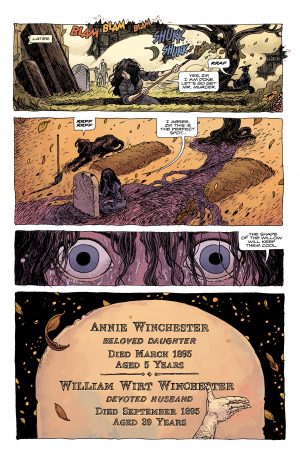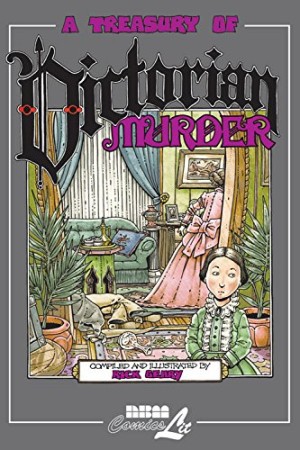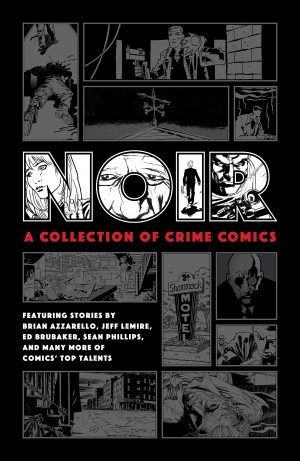Review by Ian Keogh
Little is actually known about heiress Sarah Winchester and what drover her, but considerable urban legends have sprouted about what compelled her to keep adding rooms to a house she started building in San Jose in 1884. They refer to the incessant construction and eccentricity of what resulted as a form of appeasement for the angry ghosts of those slain by the Winchester repeating rifle.
Peter J. Tomasi takes the myth as the basis for his story of madness and compulsion. His Sarah Winchester talks to her dead husband, switches her bedroom every night, and carries out assorted strange rituals, meaningful to her, but unknowable to the many men she employs to keep building day and night. Many of those workers are killers, who’ve ended up at the Winchester house to find their own form of redemption. Although utterly incomprehensible to most, Sarah has her purpose, and that’s unsettled by the arrival of Warren Peck as a new builder who’ll work for food and lodgings. He personifies the type of man with a guilty past who ends up resident, and is gradually taken into Sarah’s confidence.
Tomasi’s story is good, his words adopting a foreboding tone, and unwinding the conventional view of Sarah Winchester along with her obsessions. What elevates House of Penance further, however, is the wonderfully unsettling art. Ian Bertram’s pages are tremendous, so entirely in tune with the theme. He channels the same types of 19th century whimsy as Rick Geary, but it’s possible to view all sorts of other influences in his work, prominently Jean Giraud, both under his own name and Moebius. While Bertram’s influences can be seen, the work is utterly his own. A density to his panels is prevalent throughout, cross-hatching prominent, and in combination with colourist Dave Stewart he creates a disturbing enclosed world of grotesque fantasy. He manifests Sarah’s torment in the form of blood red tendrils, seen seeping through floorboards and snaking around workmen, and as the story continues creates magnificent hellish visions.
There’s a purpose to the 1905 setting, one that conflates reality with belief and brings a suitably hellish finale to a disturbing and tragic story. Even during the current golden era for the spread of assorted genres in graphic novel form House of Penance is unique and memorable, a horror title for those not especially concerned with that format.
If interested, Richard Allan Wagner provides an alternative reading of the Winchester House and its novelty here. He also has stories to tell about Shakespeare, and Alan Moore used the Winchester House as background for an effective Swamp Thing story.
